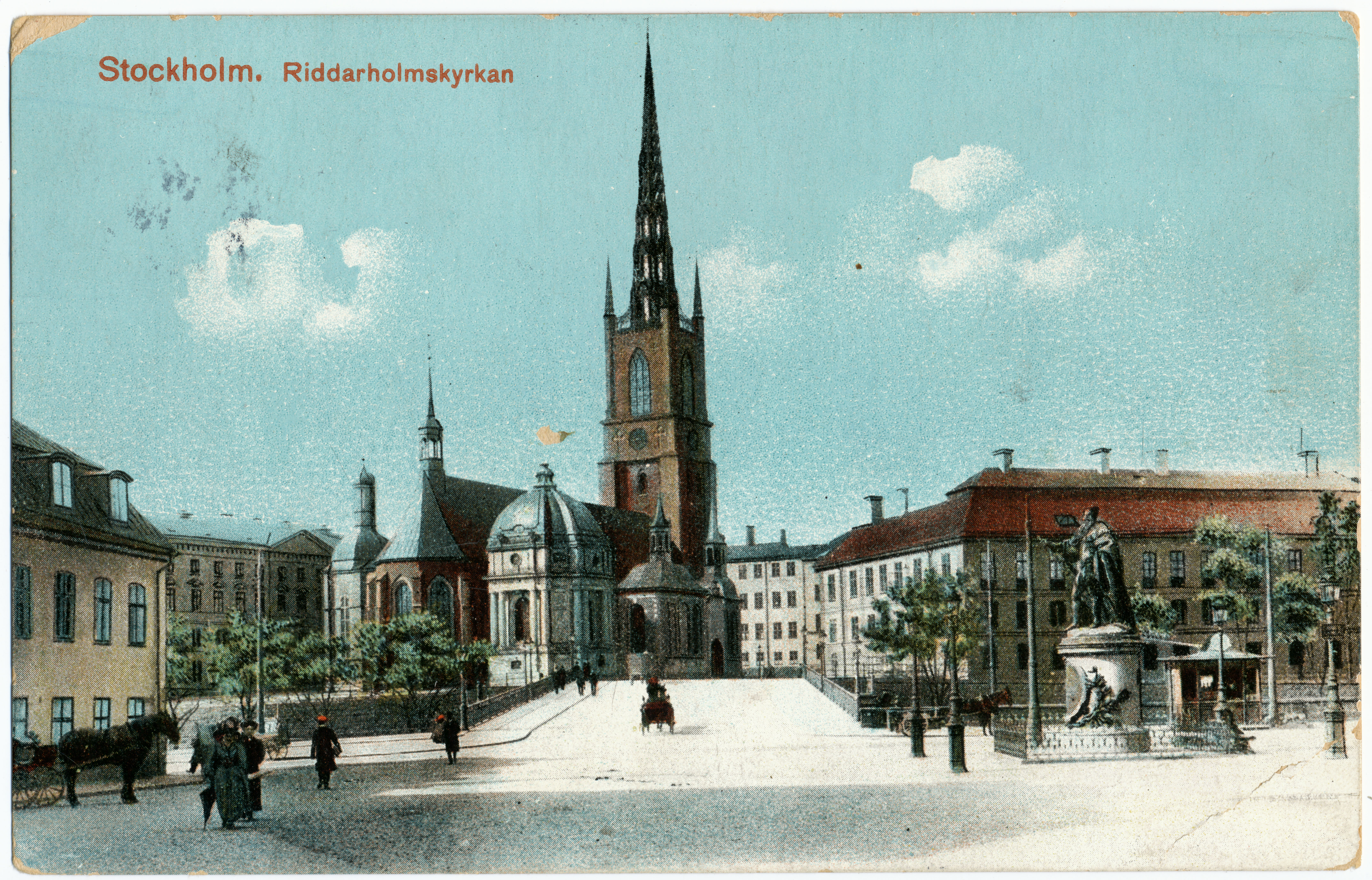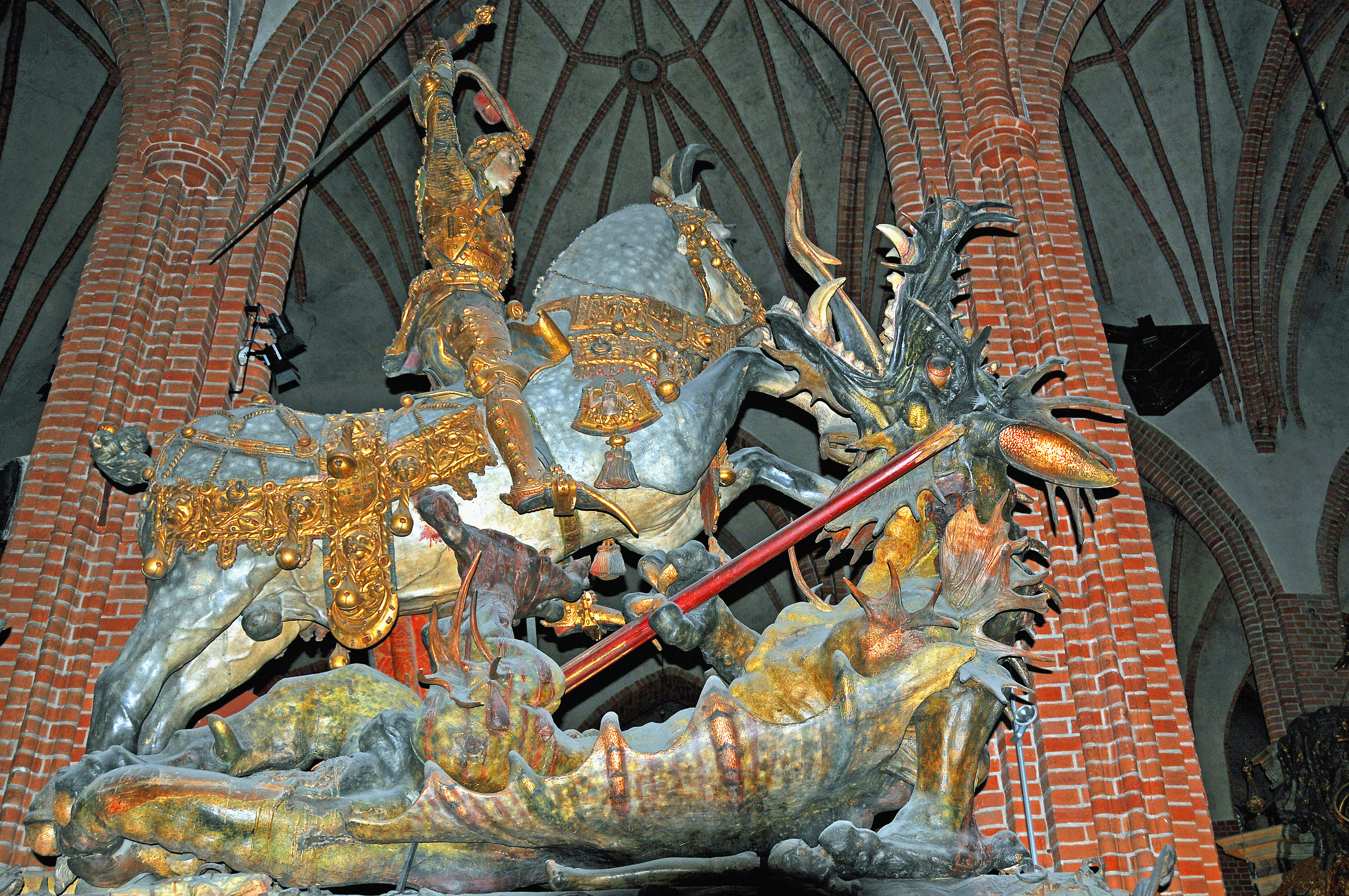|
Grey Friar's Abbey, Stockholm
The Greyfriars Monastery (Swedish: ''Gråmunkeklostret'') on the island of Riddarholmen in Stockholm was a monastery for males of the Franciscan Order, in operation from 1270 until the Swedish Reformation of 1527. History The monastery was founded upon donation by King Magnus III of Sweden in 1270, and in 1288, he also donated the Skeppsholmen area to the abbey. It was because of the abbey that Riddarholmen has been called ''Gråbrödraholm'' (Grey Brother's Islet), ''Munckholmen'' (Monk's Islet), and ''Gråmunkeholm'' or ''Gråmunkeholmen'' (Grey Friar's Islet). During the 15th-century, the island of Kungsholmen was also called ''Munklägret'' (Monk's Camp) because of the activities of the abbey in the area. At the end of the 15th century, it was headed by Kanutus Johannis, who contributed several volumes to its library. After the Siege of Tre Kronor (castle) on 9 May 1502, the defeated Queen, Christina of Saxony, was kept prisoner here by Sten Sture the Elder. Dissolution In ... [...More Info...] [...Related Items...] OR: [Wikipedia] [Google] [Baidu] |
Christina Of Saxony
Christina of Saxony (born Torgau, 25 December 1461 – died Odense, 8 December 1521), was Queen of Denmark, Norway and Sweden as the wife of King John. Life Early life Christina was engaged to John, King of Denmark, Norway and Sweden, in 1477. The year after, she traveled from Saxony to Warnemunde, where she was met by a Danish retinue who brought her Copenhagen Castle, where she was married to John on 6 September 1478. The wedding is described as magnificent, with possessions of a knights and the bride, dressed in gold embroidered red, travelling in a carriage of gold.Jorgensen, Ellen & Skovgaard, Johanne, Danske dronniger; fortaellinger og karakteristikker af Ellen Jorgensen og Johanne Skovgaard', Kobenhavn H. Hagerup, 1910 In 1481, she became queen of Denmark. She was however not crowned until 1483, when John had become king of Norway also. On 18 May 1483, she and John were crowned king and queen of Denmark in the Frue Kirke in Copenhagen. During the first twe ... [...More Info...] [...Related Items...] OR: [Wikipedia] [Google] [Baidu] |
Medieval Sweden
In the history of Europe, the Middle Ages or medieval period lasted approximately from the late 5th to the late 15th centuries, similar to the post-classical period of global history. It began with the fall of the Western Roman Empire and transitioned into the Renaissance and the Age of Discovery. The Middle Ages is the middle period of the three traditional divisions of Western history: classical antiquity, the medieval period, and the modern period. The medieval period is itself subdivided into the Early, High, and Late Middle Ages. Population decline, counterurbanisation, the collapse of centralized authority, invasions, and mass migrations of tribes, which had begun in late antiquity, continued into the Early Middle Ages. The large-scale movements of the Migration Period, including various Germanic peoples, formed new kingdoms in what remained of the Western Roman Empire. In the 7th century, North Africa and the Middle East—most recently part of the Eastern Roman ... [...More Info...] [...Related Items...] OR: [Wikipedia] [Google] [Baidu] |
1527 Disestablishments In Europe
Fifteen or 15 may refer to: *15 (number), the natural number following 14 and preceding 16 *one of the years 15 BC, AD 15, 1915, 2015 Music *Fifteen (band), a punk rock band Albums * ''15'' (Buckcherry album), 2005 * ''15'' (Ani Lorak album), 2007 * ''15'' (Phatfish album), 2008 * ''15'' (mixtape), a 2018 mixtape by Bhad Bhabie * ''Fifteen'' (Green River Ordinance album), 2016 * ''Fifteen'' (The Wailin' Jennys album), 2017 * ''Fifteen'', a 2012 album by Colin James Songs * "Fifteen" (song), a 2008 song by Taylor Swift *"Fifteen", a song by Harry Belafonte from the album '' Love Is a Gentle Thing'' *"15", a song by Rilo Kiley from the album ''Under the Blacklight'' *"15", a song by Marilyn Manson from the album ''The High End of Low'' *"The 15th", a 1979 song by Wire Other uses *Fifteen, Ohio, a community in the United States * ''15'' (film), a 2003 Singaporean film * ''Fifteen'' (TV series), international release name of ''Hillside'', a Canadian-American teen drama *Fif ... [...More Info...] [...Related Items...] OR: [Wikipedia] [Google] [Baidu] |
Christian Monasteries Established In The 13th Century
Christians () are people who follow or adhere to Christianity, a monotheistic Abrahamic religion based on the life and teachings of Jesus Christ. The words ''Christ'' and ''Christian'' derive from the Koine Greek title ''Christós'' (Χριστός), a translation of the Biblical Hebrew term ''mashiach'' (מָשִׁיחַ) (usually rendered as ''messiah'' in English). While there are diverse interpretations of Christianity which sometimes conflict, they are united in believing that Jesus has a unique significance. The term ''Christian'' used as an adjective is descriptive of anything associated with Christianity or Christian churches, or in a proverbial sense "all that is noble, and good, and Christ-like." It does not have a meaning of 'of Christ' or 'related or pertaining to Christ'. According to a 2011 Pew Research Center survey, there were 2.2 billion Christians around the world in 2010, up from about 600 million in 1910. Today, about 37% of all Christians live in the Am ... [...More Info...] [...Related Items...] OR: [Wikipedia] [Google] [Baidu] |
13th-century Establishments In Sweden
The 13th century was the century which lasted from January 1, 1201 ( MCCI) through December 31, 1300 ( MCCC) in accordance with the Julian calendar. The Mongol Empire was founded by Genghis Khan, which stretched from Eastern Asia to Eastern Europe. The conquests of Hulagu Khan and other Mongol invasions changed the course of the Muslim world, most notably the Siege of Baghdad (1258), the destruction of the House of Wisdom and the weakening of the Mamluks and Rums which, according to historians, caused the decline of the Islamic Golden Age. Other Muslim powers such as the Mali Empire and Delhi Sultanate conquered large parts of West Africa and the Indian subcontinent, while Buddhism witnessed a decline through the conquest led by Bakhtiyar Khilji. The Southern Song dynasty would begin the century as a prosperous kingdom but would eventually be invaded and annexed into the Yuan dynasty of the Mongols. The Kamakura Shogunate of Japan would be invaded by the Mongols. Goryeo resisted ... [...More Info...] [...Related Items...] OR: [Wikipedia] [Google] [Baidu] |
1270 Establishments In Europe
1 (one, unit, unity) is a number representing a single or the only entity. 1 is also a numerical digit and represents a single unit of counting or measurement. For example, a line segment of ''unit length'' is a line segment of length 1. In conventions of sign where zero is considered neither positive nor negative, 1 is the first and smallest positive integer. It is also sometimes considered the first of the infinite sequence of natural numbers, followed by 2, although by other definitions 1 is the second natural number, following 0. The fundamental mathematical property of 1 is to be a multiplicative identity, meaning that any number multiplied by 1 equals the same number. Most if not all properties of 1 can be deduced from this. In advanced mathematics, a multiplicative identity is often denoted 1, even if it is not a number. 1 is by convention not considered a prime number; this was not universally accepted until the mid-20th century. Additionally, 1 is the s ... [...More Info...] [...Related Items...] OR: [Wikipedia] [Google] [Baidu] |
Franciscan Monasteries In Sweden
, image = FrancescoCoA PioM.svg , image_size = 200px , caption = A cross, Christ's arm and Saint Francis's arm, a universal symbol of the Franciscans , abbreviation = OFM , predecessor = , merged = , formation = , founder = Francis of Assisi , founding_location = , extinction = , merger = , type = Mendicant Order of Pontifical Right for men , status = , purpose = , headquarters = Via S. Maria Mediatrice 25, 00165 Rome, Italy , location = , coords = , region = , services = , membership = 12,476 members (8,512 priests) as of 2020 , language = , sec_gen = , leader_title = Motto , leader_name = ''Pax et bonum'' ''Peace and llgood'' , leader_title2 = Minister General , leader_name2 = ... [...More Info...] [...Related Items...] OR: [Wikipedia] [Google] [Baidu] |
Riddarholmen Church
Riddarholmen Church ( sv, Riddarholmskyrkan) is the church of the former medieval Greyfriars Monastery in Stockholm, Sweden. The church serves as the final resting place of most Swedish monarchs. Riddarholmen Church is located on the island of Riddarholmen, close to the Royal Palace in Stockholm, Sweden. The congregation was dissolved in 1807 and today the church is used only for burial and commemorative purposes. Swedish monarchs from Gustavus Adolphus (d. 1632 AD) to Gustaf V (d. 1950) are entombed here (with only one exception: Queen Christina who is buried within St. Peter's Basilica in Rome), as well as the earlier monarchs Magnus III (d. 1290) and Charles VIII (d. 1470). It has been discontinued as a royal burial site in favor of the Royal Cemetery and today is run by departments of the Swedish Government and Royal Court. It is one of the oldest buildings in Stockholm, parts of it dating to the late-13th century, when it was built as a greyfriars monastery. After ... [...More Info...] [...Related Items...] OR: [Wikipedia] [Google] [Baidu] |
Danviken Hospital
Danvikens hospital was a historical Swedish hospital, insane asylum and retirement home in Stockholm, active in 1558–1861. The area belonged to Stockholms kommun until 1984, when it was transferred to Nacka kommun. The Danvikens hospital was founded by the initiative of King Gustav Vasa in 1558. The current building is designed by Göran Josuæ Adelcrantz (1668–1739) and dates back to 1718–1725. From the 1740s, the hospital also functioned as an Insane asylum. The hospital is frequently mentioned within literature and during the 18th and 19th centuries; the name ''Danviken'' was used in common language as a synonym for a "Mad House". A famous description of the Danviken Asylum was ''Fältskärns berättelser'' (The tales of a Feldsher) by Zacharias Topelius Zachris Topelius (, ; 14 January 181812 March 1898) was a Finnish author, poet, journalist, historian, and rector of the University of Helsinki who wrote novels related to Finnish history. Given name Zacharias ... [...More Info...] [...Related Items...] OR: [Wikipedia] [Google] [Baidu] |
Sten Sture The Elder
Sten Sture the Elder ( sv, Sten Sture den äldre; 1440 – 14 December 1503) was a Swedish statesman and regent of Sweden from 1470–1497 and 1501–1503. As the leader of the victorious Swedish separatist forces against the royal unionist forces during the Battle of Brunkeberg in 1471, he weakened the Kalmar Union considerably and became the effective ruler of Sweden as Lord Regent for most of his remaining life. Background In contemporary sources he is alternatively referred to as ''Sten Gustavsson'' or ''Herr Sten'' ''(Lord Sten)''; the practice of using noble family names as part of a personal name was not yet in use in Sweden at the time. He was born around 1440, the son of Gustav Anundsson of the Sture family and Birgitta Stensdotter Bielke, half-sister of the future Charles VIII. The Sture family was one of the high-ranking noble families of the time, though only distantly related to the royal house; his closest royal ancestor was King Sverker II of Sweden (both through ... [...More Info...] [...Related Items...] OR: [Wikipedia] [Google] [Baidu] |







